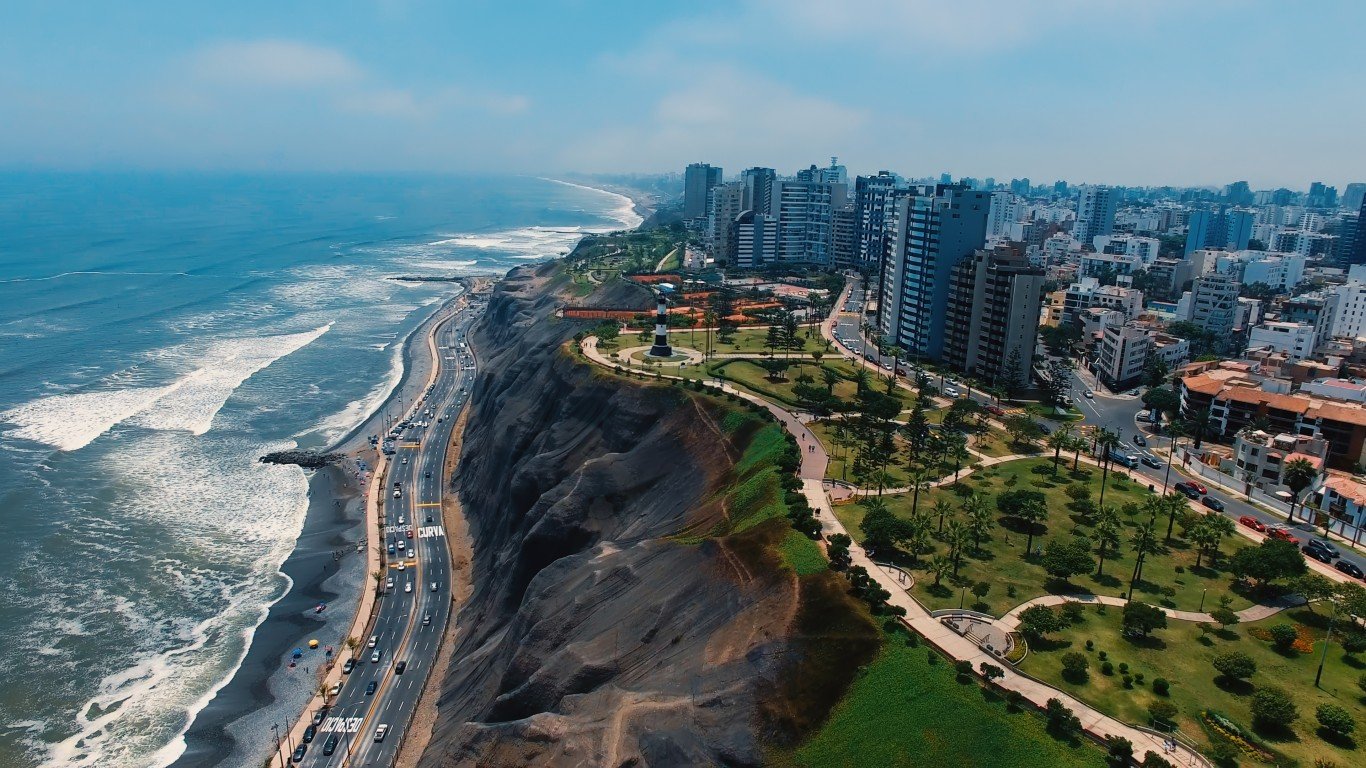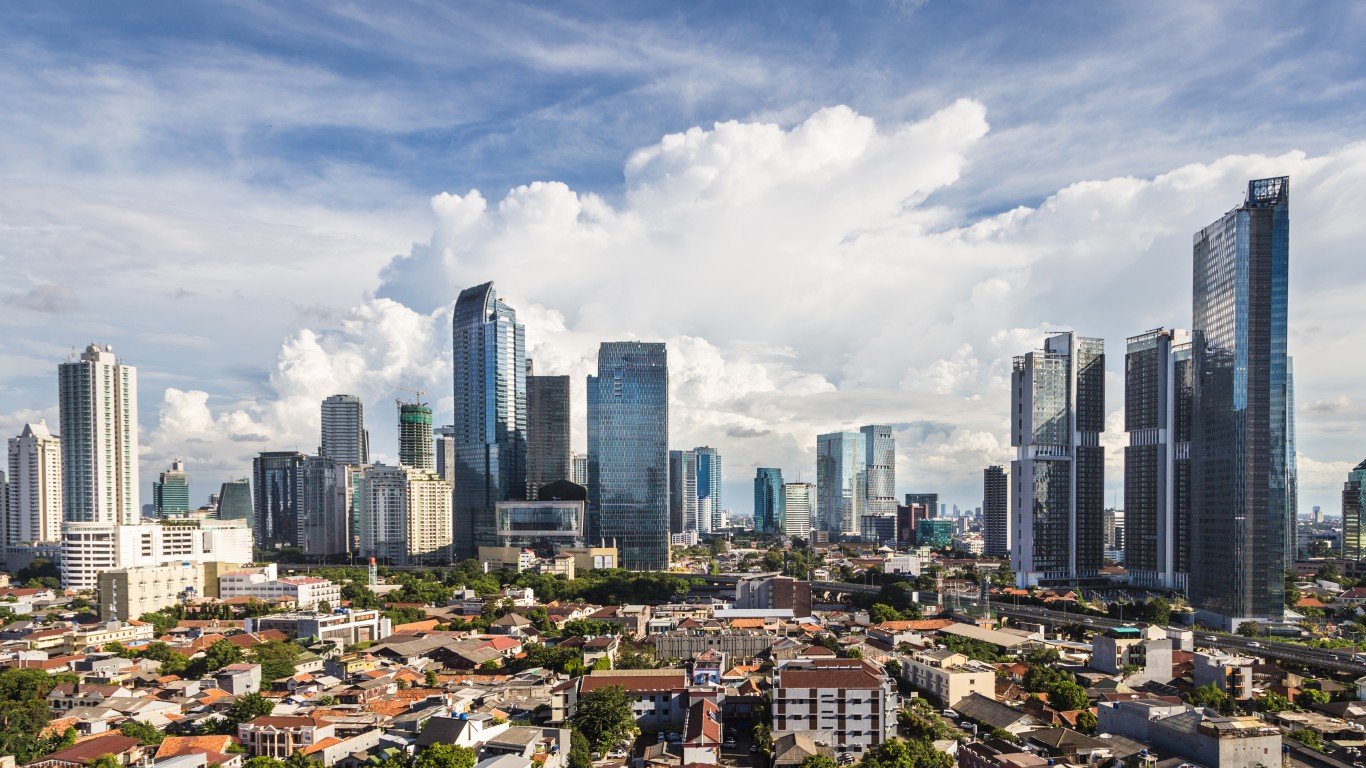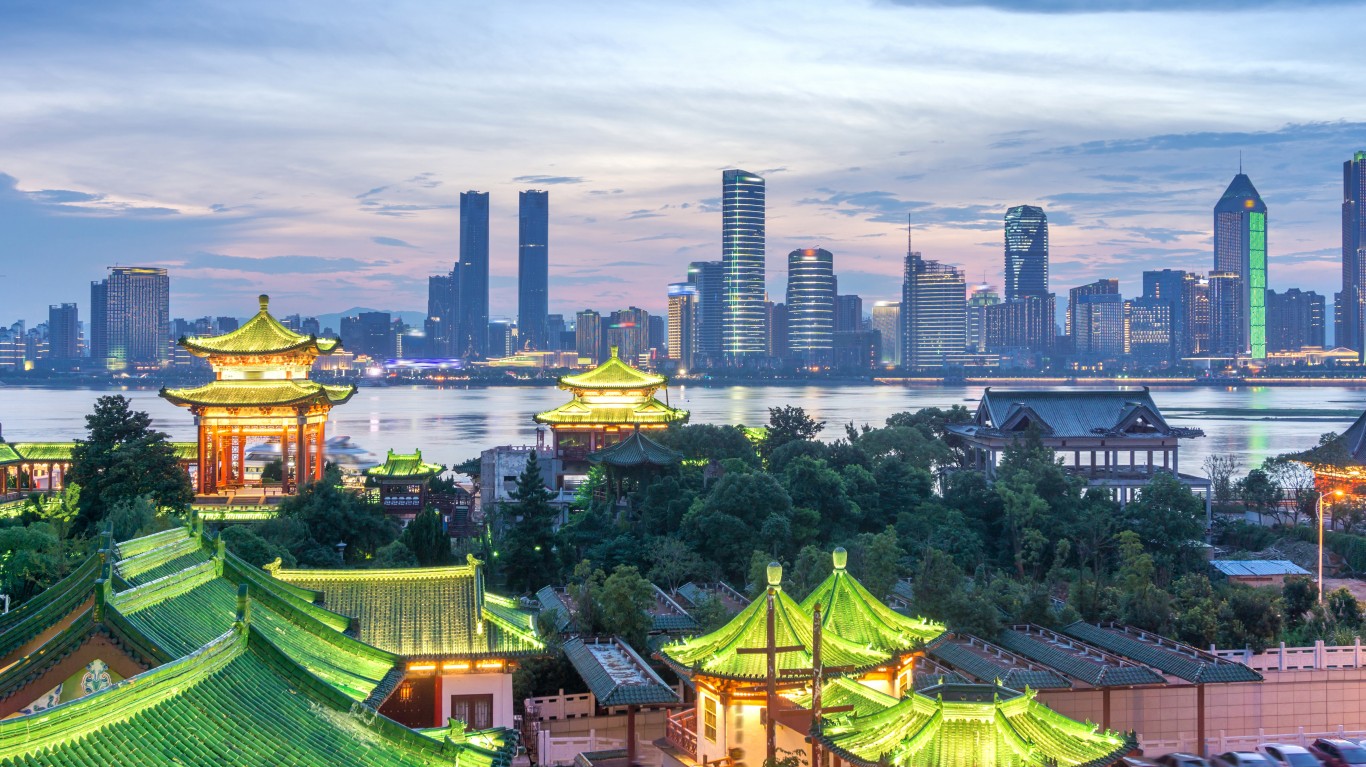
15. Bangkok, Thailand
> Population (2021): 10.72 million
Bangkok was built on a bed of soft clay stretching over swampland, so has been sinking gradually for much of its history. Last year, scientists announced that portions of the city were now as much as a meter (3.28 feet) lower than they were originally. Some sources predict that Bangkok will be totally submerged by 2200.

14. Lima, Peru
> Population (2021): 10.88 million
In 2012, the Peruvian Navy’s oceanography department warned that significant stretches of the coastline around Lima could be rendered uninhabitable by rising seas and eroding beaches by 2092. Another consequence of global warming for Lima to worry about is the melting of tropical glaciers in the nearby Cordillera Blanca region, which supply hydroelectric power and drinking water to the Peruvian capital.

13. Jakarta, Indonesia
> Population (2021): 10.92 million
The Indonesian capital is threatened not only by rising seas but by sinking land, as groundwater is pumped out of the aquifers beneath the city. Because of the environmental threat to Jakarta, the country’s president, Joko Widodo, is promoting a controversial and as yet unfunded plan to move the capital to a new location on the island of Borneo.

12. Chennai (Madras), India
> Population (2021): 11.24 million
Formerly known as Madras, this city is the sixth-most populous in India. Last year, a study by the nation’s National Centre for Coastal Research predicted that any property within 100 meters (about 109 yards) of Chennai’s coastline will be permanently inundated by 2025 if sea level rise continues at its current rate. By 2100, the study added, waters could reach a full kilometer (over six-tenths of a mile) from the seaside.

11. Shenzhen, China
> Population (2021): 12.59 million
This one-time small fishing village in the Pearl River Delta is now a major tech hub with a population that may greatly exceed the official figure due to unregistered migrants, commuters, and short-term residents. Buffeted by super-typhoons and subject to surges from the South China Sea, the city “does not have the knowledge and resources, and is far from getting ready to react to the threats of sea level rise and other climate-induced changes at the scale being forecasted by scientists,” according to a 2019 paper from the Fábos Conference on Landscape and Greenway Planning.

 24/7 Tempo
24/7 Tempo




